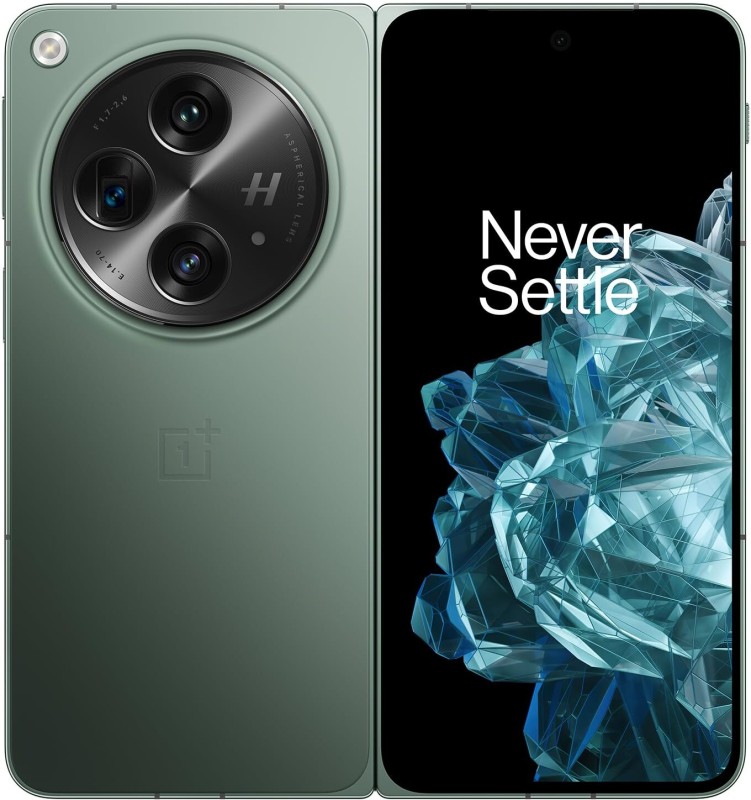OnePlus Open Review: Has OnePlus really mastered the foldable formula?

- Excellent foldable interface; great at multitasking
- Impressive cameras
- Sleek build and design; minimal crease
- 67 W fast charging
- Bright displays
- Lags behind in synthetic benchmarks
- Wireless charging is missing
- Refresh rate only flicks between 60 and 120 Hz on Auto
So, the question is – has OnePlus finally perfected the foldable phone formula? The answer? They’ve come extremely close. The OnePlus Open is an exemplary foldable – one that shows off how to do multitasking and cameras right. In my opinion, the foldable interface on the OnePlus Open is the absolute best in the market right now. It capitalises on the large real estate the inner screen offers in a manner that no one has yet. Additionally, the cameras are capable enough to be compared against regular candy-bar flagship phones.
Although I really enjoy using this phone, it is not perfect. The refresh rate issues can take a serious toll on battery life, battery life is not the best in the segment, and gaming is not as seamless as on flagships.
The foldable landscape in India has seen a massive shift in 2023. This segment was once dominated by only one major player, but now, it is brimming with activity across the globe. In India, we’ve seen a bunch of OEMs establish their presence in the foldable space in 2023. These include brands such as Tecno, OPPO, Motorola, and more. OnePlus has joined the race with its debut foldable – the OnePlus Open. The company has launched this phone with a tall claim – having the most well-thought-out and functional foldable experience.

Priced at ₹1,39,999, the OnePlus Open addresses many issues people have had with its fiercest rival – the Samsung Galaxy Z Fold5 (review). The crease is minimal, the cover display aspect ratio is palatable, and the cameras seem to be free of compromise. The cameras are also closer than ever to flagship level. We’re going to talk about all these things and more in detail in our OnePlus Open review. We will also find out if the OnePlus Open has truly made a splash in the foldable space. One that is big enough to make Samsung and other players shake in their boots.
OnePlus Open Review: Build and Design
For me, the OnePlus Open’s design is very close to perfect. The OnePlus Open strikes the perfect balance between being sleek and robust. The phone is both thinner and lighter than the Samsung Galaxy Z Fold5. It is the most comfortable full-sized foldable I’ve held so far. Slightly more curved edges could have enhanced the in-hand comfort even more, but for a first-generation design, this is brilliant.
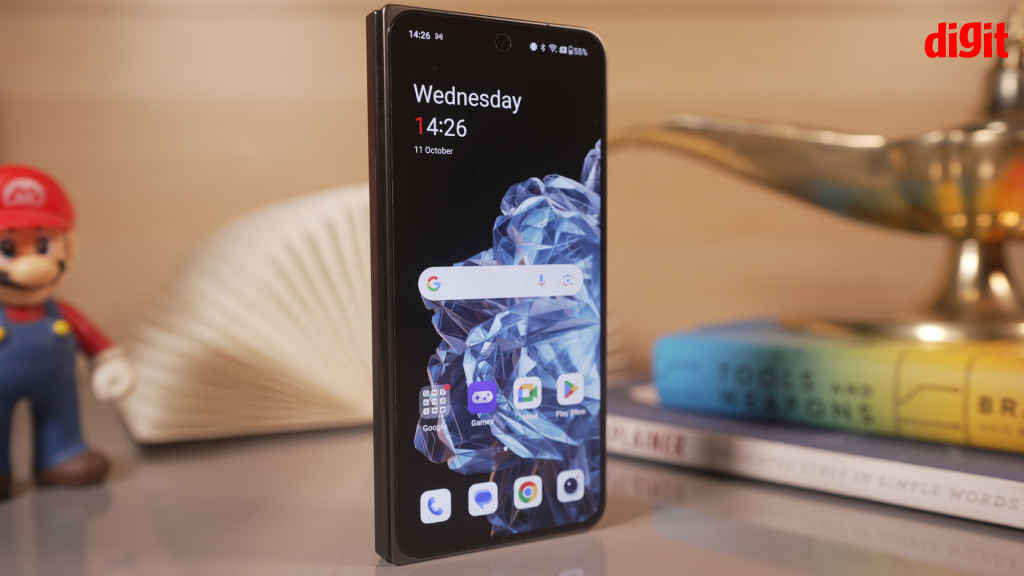
The OnePlus Open is available in two colourways – Voyager Black and Emerald Dusk. I got the former for review and it features a rather attractive-looking vegan leather rear panel. On the other hand, the Emerald Dusk variant has a smooth matte-frosted glass rear panel that also looks premium. You also get some OnePlus branding in the middle of the rear panel and a flash on the top left.
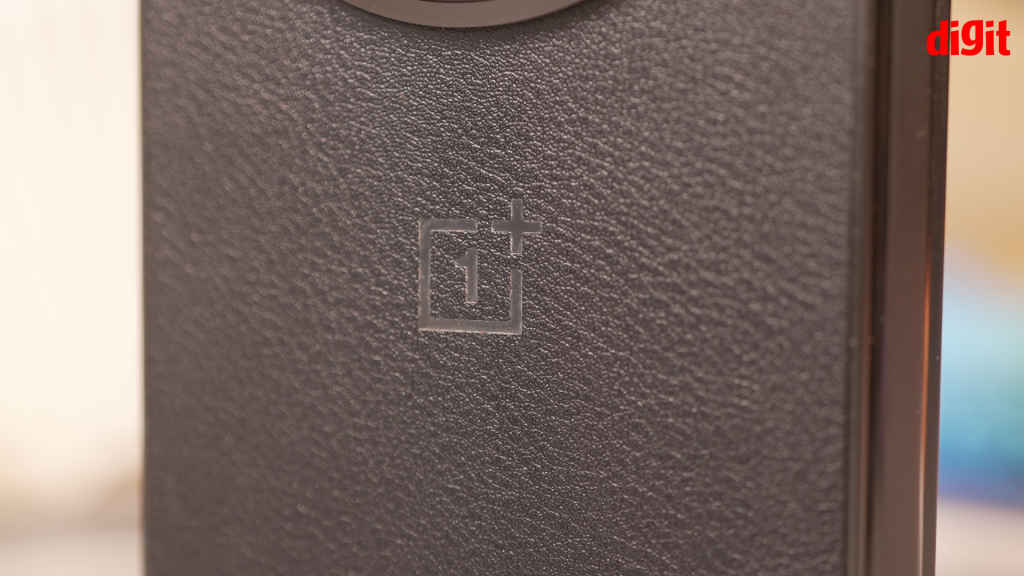
One thing that takes away from what could have been the perfect Fold design is the camera bump. The camera module on the OnePlus Open is quite polarising. I’ve had some people tell me they absolutely despite how bulky it is. On the other hand, some have been starry-eyed about how it resembles the Hasselblad cameras of the yesteryears.
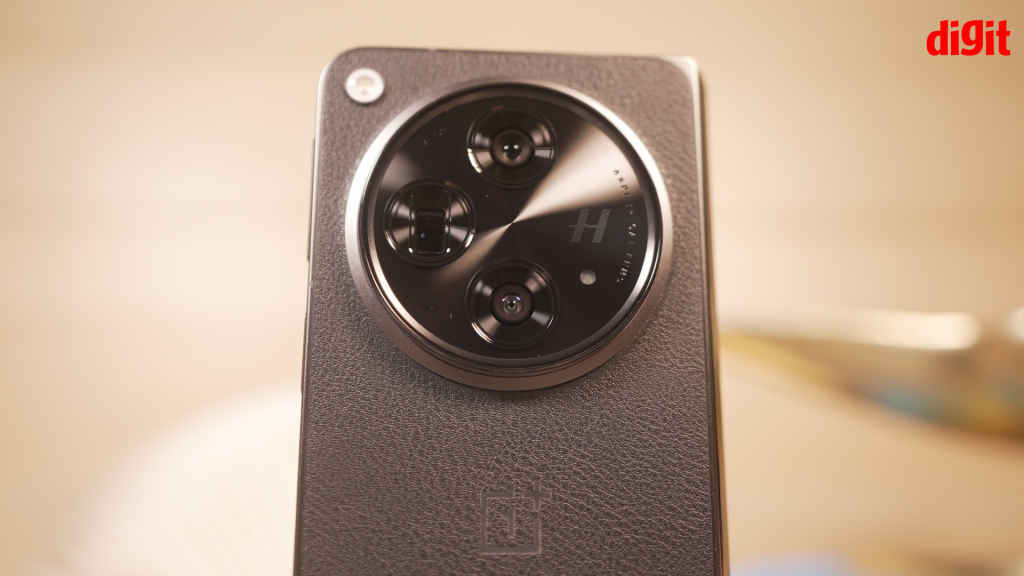
The camera module juts out considerably which also makes it rock a lot on a flat surface. However, it has helped OnePlus bring better cameras to the form factor. So, you can be the judge if the improved cameras are worth having a bulky camera module.
Camera module aside, the phone folds completely flat (always a plus in our books), the buttons are nice and tactile, the alert slider is super convenient, and the fingerprint sensor is quite fast. The Type-C charging port and SIM tray sit at the bottom. Surprisingly, OnePlus has added an IR blaster on the top.
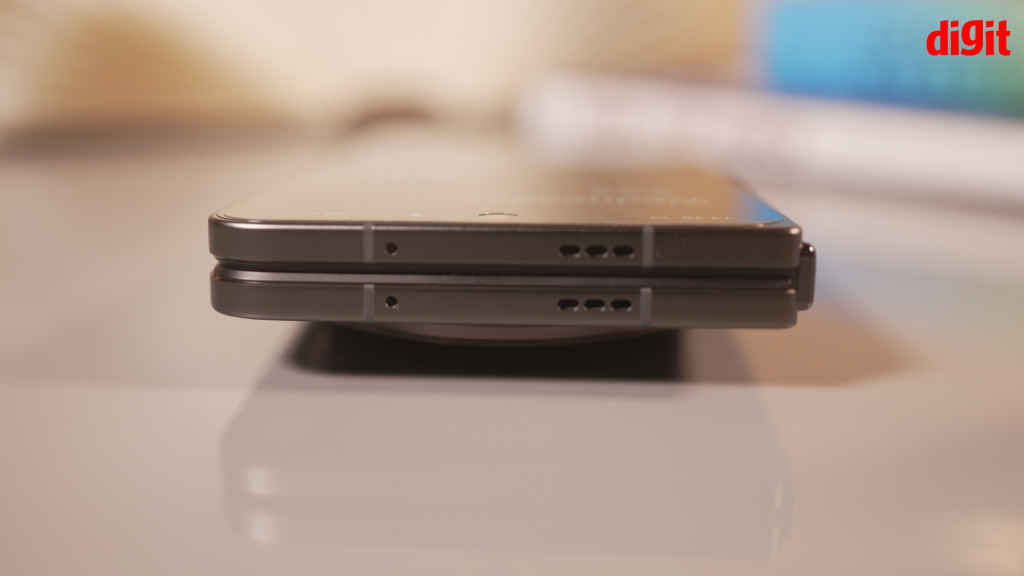
The phone is IPX4 rated. This gives basic protection from splashes but the phone can’t survive a dunk in water. On a recent trip to the Andaman Islands, the phone did get splashed a lot. The cameras did get a bit cloudy but they cleared up in a matter of minutes.
Overall, I’m a huge fan of the OnePlus Open’s design. If the camera module was flat, this would be near perfection. The slim and lightweight design is one reason, but another reason is the cover display’s aspect ratio. Let’s talk about it.
How do the displays fare?
The OnePlus Open displays are kitted out with some of the latest specifications. But the two things that impressed me the most were the cover screen’s aspect ratio and the near-invisible crease. If you’ve ever opened a Samsung foldable device, the crease is almost always the first thing you notice. Whether the screen is on or off, the crease draws your attention every single time.
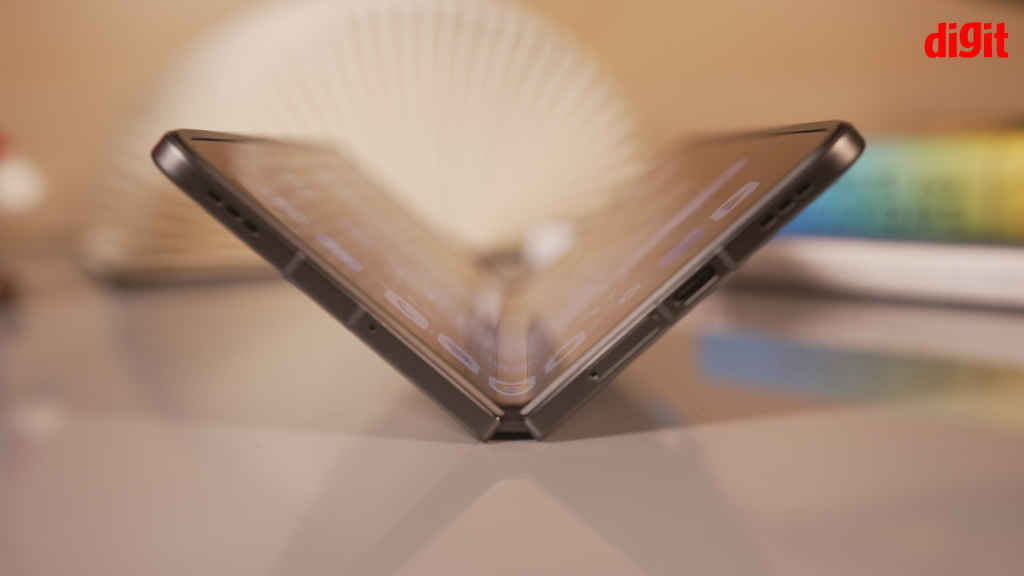
With the OnePlus Open, I’ve had to make a real effort to notice it. You’ve got to inspect it closely to actually tell there’s a crease. Even with the display turned off, the crease is only visible at an angle – and nowhere as prominent as most competitors. So, OnePlus’ ‘Flexion’ Hinge is really working wonders here.
The aspect ratio of the cover screen is also much more user-friendly than that of the Z Fold5. The 20:9 aspect ratio is more comfortable to use. One-handed operation is easier and the screen doesn’t feel vertically stretched but more like a normal candy bar phone.
Both the inner and outer displays have nice and symmetrical bezels, but they’re a bit thick. The cover display is 6.31 inches while the primary display measures 7.82 inches. Both come with 2K resolution and north of 425 PPI, which means they look incredibly crisp and detailed. Both displays are also 120 Hz AMOLED with LTPO 3.0 which allows them to adjust refresh rate as per the need.
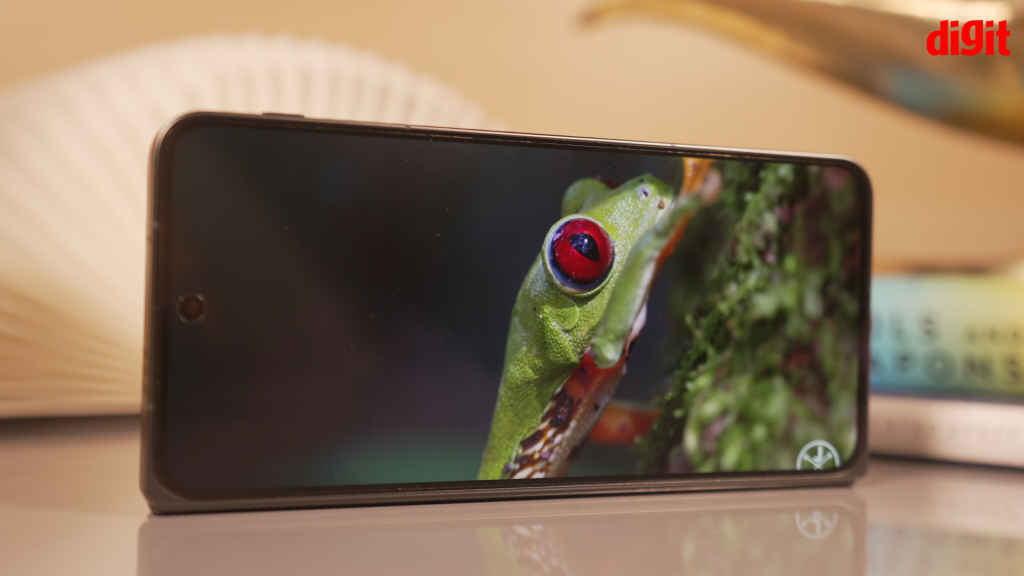
The primary display can go down to 1 Hz while the cover display can go down to 10 Hz. Or at least that’s what they’re supposed to do. I found that the displays were only switching between 60 Hz and 120 Hz on Auto mode when I tested the phone. This is concerning because it will obviously mess with battery life. I really hope OnePlus fixes this via an OTA update before it hits the shelves.
Refresh rate aside, the displays on the OnePlus Open are incredibly bright. OnePlus claims that the peak brightness can go up to a whopping 2,800 nits. I recorded 2,021 nits of peak brightness on Auto Mode under direct sunlight, which is very impressive. So there are no issues viewing the display on sunny days.
The OnePlus Open has ‘ProXDR’ displays. These merely brightened up highlights when viewing HDR photos or videos on the screen. They don’t really do much else. We’ve seen the same feature in action on a recent OPPO flip phone; it’s identical to that.
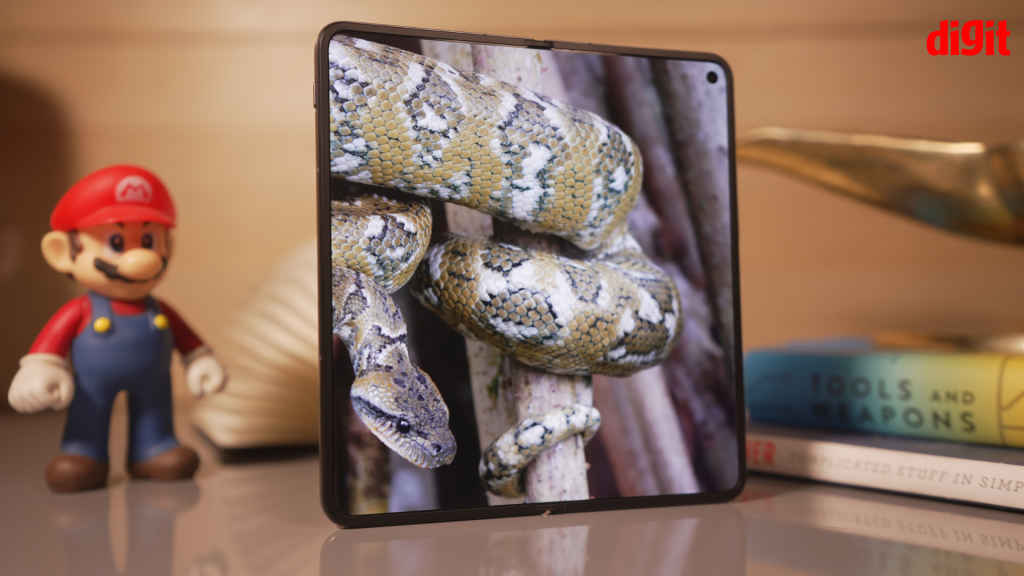
I really enjoyed watching content on these displays – HDR content looks nice and vivid and the displays are very sharp. The displays also support 10-bit colour, Dolby Vision, and HDR10+, so you have all the essentials for a good viewing experience. Add to that a Dolby Atmos-enabled triple-speaker setup, and you’re golden. The cover display is also topped with ‘Ceramic Guard’ for protection. OnePlus claims this is 20 per cent more robust than Gorilla Glass Victus, however, I haven’t dropped it enough to test this claim out.
So, the displays on the OnePlus Open are definitely feature-packed and look great, however, the refresh rate issues can really sour the overall experience because of the impact this can have on battery life.
Are these the best cameras on a foldable?
The OnePlus Open focuses heavily on its camera performance. To that end, the company has packed the foldable with an imposing set of triple cameras. First, you’ve got a 48-megapixel Sony LYT-T808 sensor with OIS that adapts ‘Pixel Stacking’ technology to boost light intake despite the smaller size of the sensor. This is accompanied by a 64-megapixel Omnivision OV64B telephoto camera with 3x optical zoom and a 48-megapixel Sony IMX581 ultra-wide shooter. The cameras are tuned in collaboration with Hasselblad, which is made pretty obvious by the Hasselblad branding on the camera module.
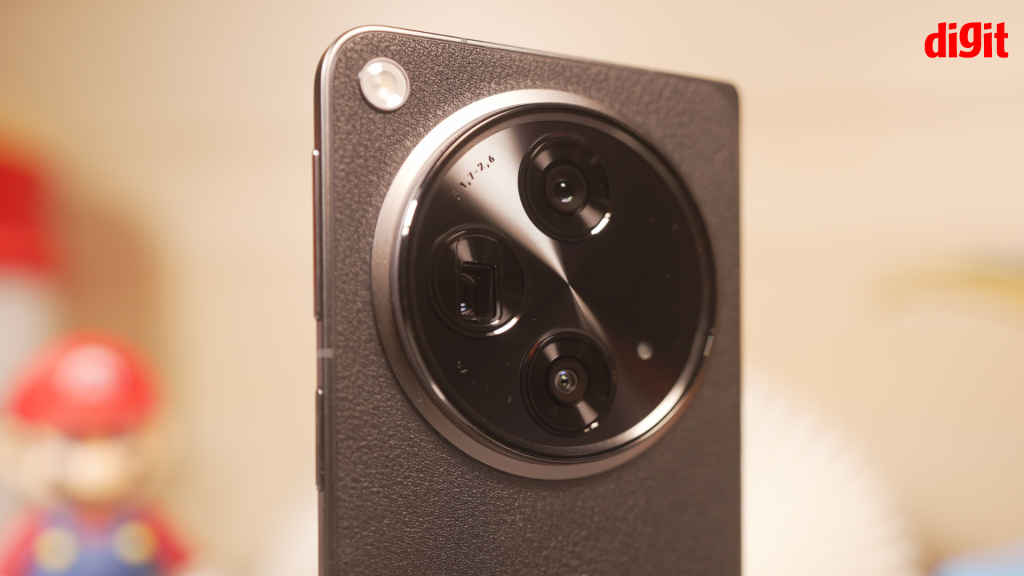
The phone houses two selfie cameras – a 20-megapixel shooter on the inner display and a 32-megapixel camera on the outer panel. You can, of course, turn on preview mode on selfie shots and use the powerful main camera to shoot selfies which provides much better results than these two selfie cameras.
OnePlus has made very few compromises on camera hardware despite the foldable form factor. Granted they’ve not used a 1-inch sensor but they’ve used a cutting-edge new Sony primary camera that provides amazing results. The primary camera takes some stunning shots in daylight and low-light conditions. The colours are close to natural, the detail is very good, and the dynamic range is decent. There are some occasions when the primary camera overexposes highlights but an update we got midway through reviewing the phone minimised those issues.



Portrait photos come out looking social-media-ready. Some issues need ironing out such as less-than-ideal edge detection and smoothening of face textures but overall, the images look flattering. The 64-megapixel telephoto camera clicks 3x portrait shots that look great; the dynamic range and colour science are very close to the main camera. You can also take 1x and 2x portrait shots; the 2x ones are digitally zoomed, so they lack some detail.


The telephoto camera, as a whole, clicks some impressive pictures. You get 3x optical zoom and 6x in-sensor zoom, and honestly, the quality hit at 6x is not bad at all – it looks very close to optical shots in terms of detail. You can also zoom digitally up to 120x, but honestly, the phone doesn’t come close to the detail and quality of the S23 Ultra’s zoom shots, especially past 10x.


Then there’s the 48-megapixel ultra-wide camera. Like the primary camera, it sometimes overexposes highlight areas, but otherwise, we quite liked the look of the photos. The colours are close to the main camera, and there isn’t a lot of barrel distortion. Detail retention could be better, but you’ll mostly notice this when you pixel peep.


Low-light shots on the primary camera look detailed when there’s a good light source. However, when the lighting is less than ideal, but I did find some pictures to be a bit noisy. Plus, there is a significant amount of detailed being crushed in the shadows. Still, the performance is not bad at all for a foldable, and maybe some software updates can resolve these low-light issues.
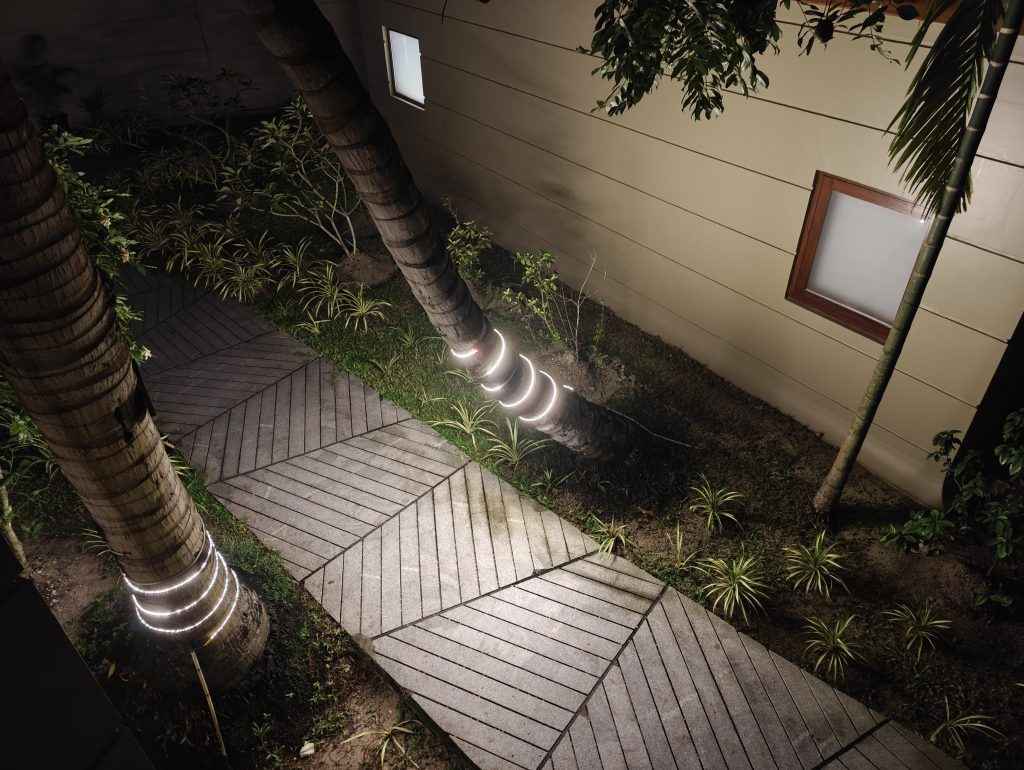

Finally, while the 20-megapixel and 32-megapixel selfie cameras are capable of clicking decent images, the selfies from the main camera are phenomenal. I see no reason why anyone should use the other two selfie cameras.
As for video, you can film in Dolby Vision at 4K up to 30 fps. There’s also normal video capture at up to 4K at 60 fps. Videos look good, there is a bit of jitter at times and low-light footage doesn’t come out so great, but overall the video quality is more than passable.
All in all, these are some impressive cameras – and what’s even more impressive is that they’re close to flagship level but in a foldable form factor. The dynamic range and low-light performance could be improved a bit, but overall, this is an excellent first attempt by OnePlus. I can only imagine it getting better with future software updates and perhaps, on the OnePlus Open 2?
OnePlus Open Review: Performance
Much like the rest of the phone, OnePlus has pumped up its first foldable with the highest-end performance specifications. You’ve got the latest Snapdragon 8 Gen 2 SoC, 16 GB of LPDDR5X RAM and 512 GB of UFS 4.0 storage. On paper, these specifications make it seem like the OnePlus Open could compete with the best flagship phones out there in terms of performance. Unfortunately, it’s not 100 per cent true.
I started off testing the OnePlus Open’s performance by running a bunch of synthetic benchmarks. In most CPU benchmarks, the OnePlus Open stood its ground – it got solid scores in AnTuTu and GeekBench, and despite lagging a bit behind in PCMark Work, the score wasn’t too bad. The phone also doesn’t throttle too much. In the CPU Throttling Test, the OnePlus Open throttled to only 85 per cent of its peak performance in 15 minutes, which is great.
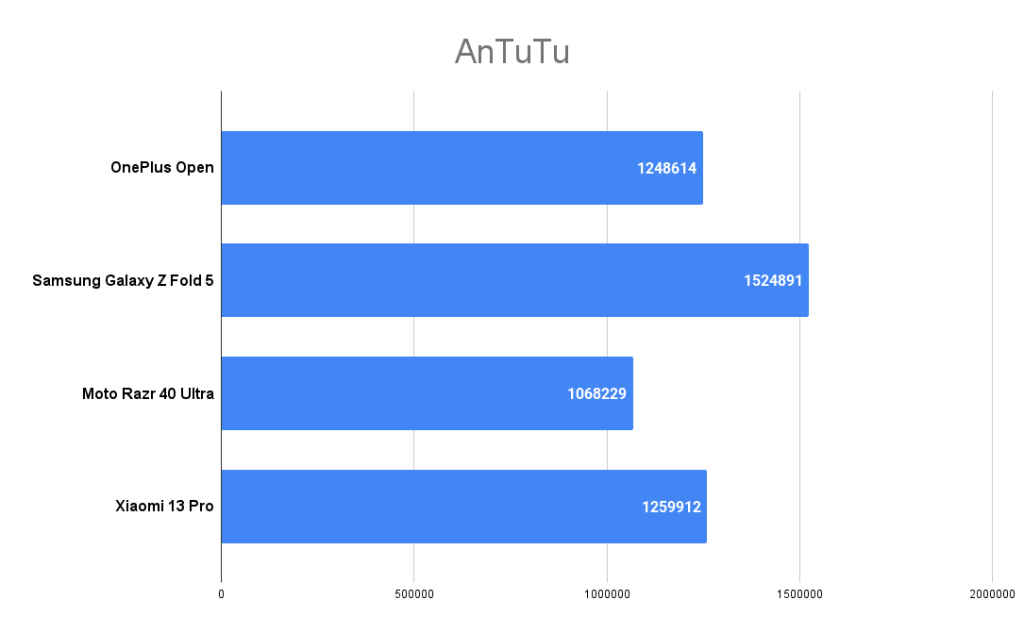
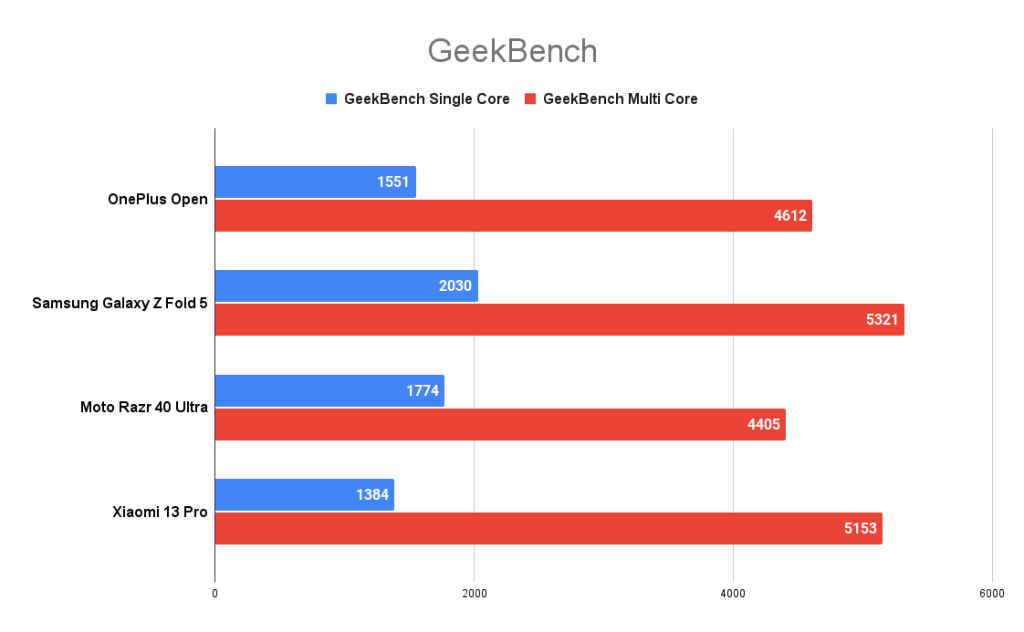
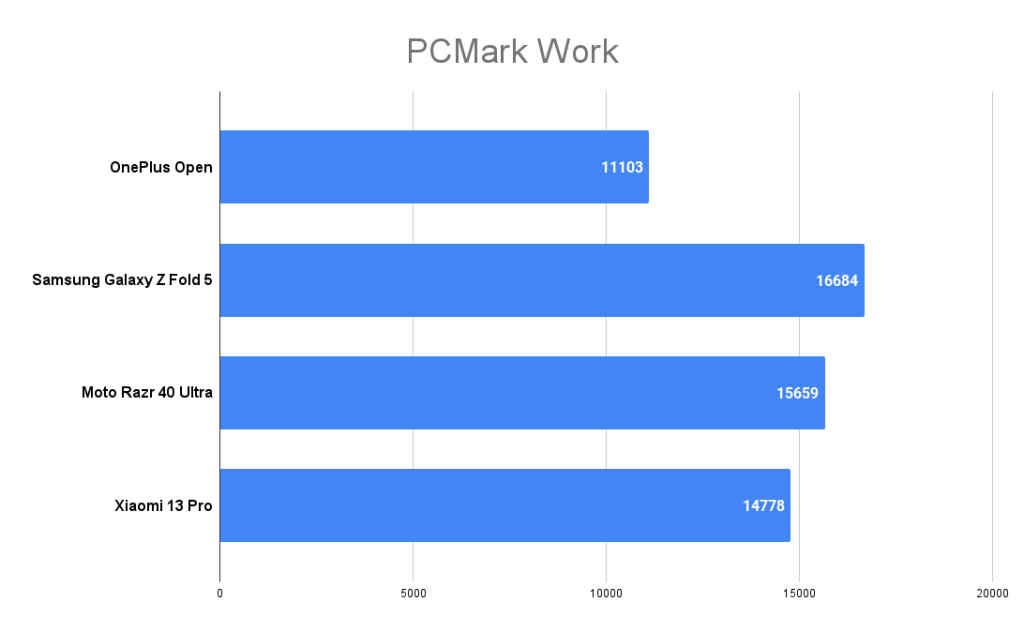
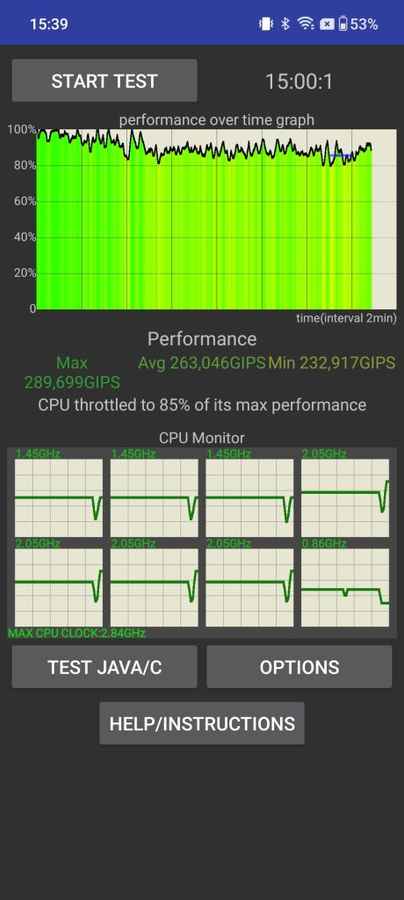
However, GPU benchmarks told a different story. The phone consistently scored low in all GPU tests including 3D Mark WildLife Extreme and all the usual tests we run in GFXBench. Additionally, while using this phone as a daily driver, I also faced some thermal issues. The phone got considerably hot when running benchmarks, shooting 4K video, and playing intensive games. For example, 10 minutes of COD: Mobile spiked the CPU temperature to around 44 degrees Celsius.
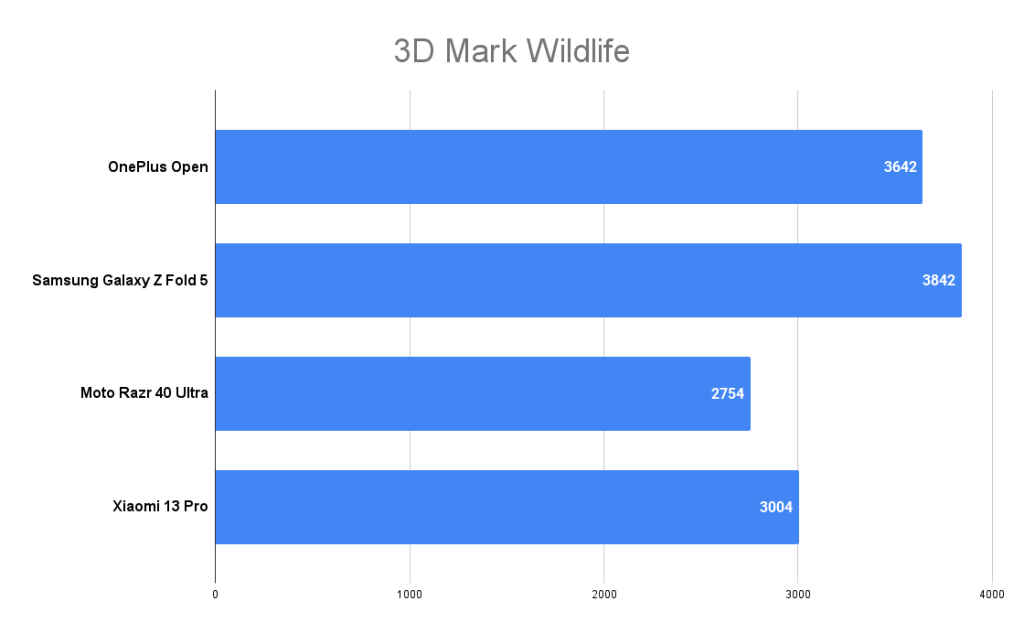
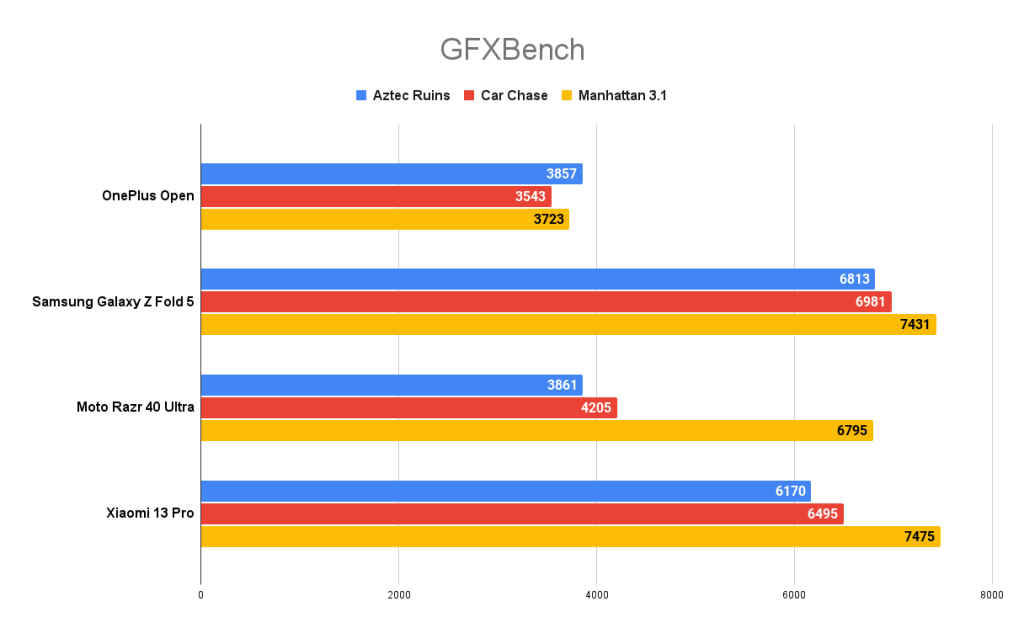
I played Call of Duty: Mobile at Very High graphics and Max frame rate, and while I did not face any major lag or stutters, the gaming experience just felt slightly janky compared to other flagships I’ve tested. There was a definite lack of fluidity when gaming.
In regular day-to-day tasks though, the phone operates very smoothly. There are no hitches, the animations are nice and smooth, and the performance is top-notch here. Multitasking is a breeze as well, with the phone being able to keep 20+ apps open at the same time. The data speeds and cell reception were also great – no real problems here.
The only problem is that the OnePlus Open – despite having flagship specifications – does feel like a tier below 2023 flagships, and even the Samsung Galaxy Z Fold5 when it comes to raw performance and synthetic benchmark scores.
OnePlus Open Review: UI
If there’s one thing I like more than the cameras on the OnePlus Open, it is the foldable UI. Until I used the OnePlus Open, I firmly believed that even though some foldables were pushing the envelope with hardware features and specifications, Samsung’s foldables had a clear edge in the UI department. The OnePlus Open has somehow decimated that edge though. The phone runs on OxygenOS 13.2 based on Android 13. OnePlus has promised four years of security updates and five years of security updates.
The foldable interface on the OnePlus Open is extremely intuitive, functional, and fun. There’s so much you can do on this that actually makes sense from a multitasking perspective. Let me explain.
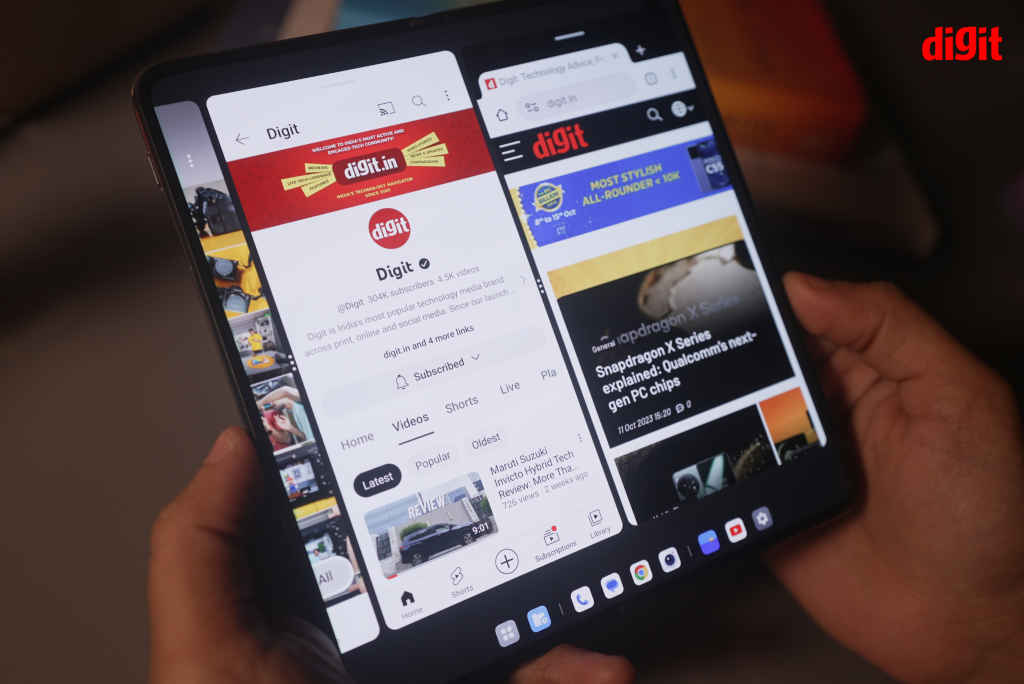
On most foldable devices, you can split your screen into 2, 3 or 4, and then these apps take up restricted space on the screen; often contorting to weird aspect ratios. OnePlus employs something they call ‘Open Canvas’ that reimages multitasking and screen-splitting in a really innovative manner. With Open Canvas, split windows aren’t restricted to the physical size of the display and they can spill over the outside, leaving only a sliver of the window that users can tap to access at any time.
What this means is that even if you have split the window into 2 or 3, you can expand each window to fill almost the entirety of the screen allowing you to work on the apps with much larger space than possible on other foldables. If you need to access any app from the group, simply tap the edge of the other app that will be displayed on the sides, and it expands to full. If you don’t like this and prefer to see your windows side by side, you can do that as well. They can be stretched and resized as you see fit, allowing users to really take control of their multitasking.
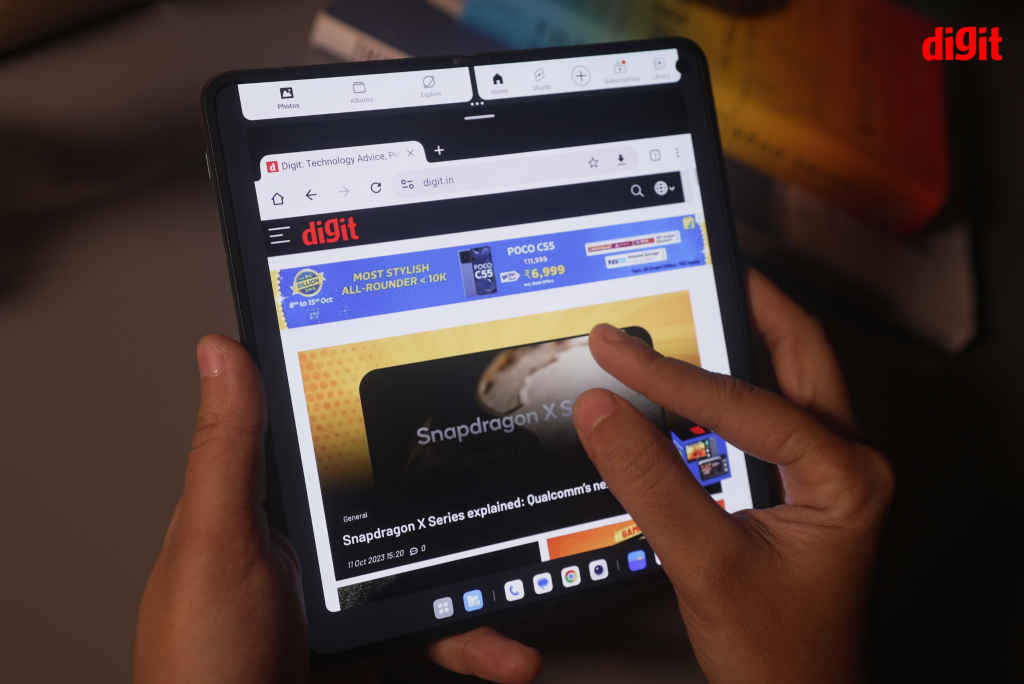
In addition to this, up to nine multi-app presets can be saved on the phone and opened up in a jiffy. The action for window splitting is also super convenient; you just swipe down with two fingers from the top of an app to open another window and select the app you want in split screen view. Photos, links and files can be easily dragged and dropped between these windows for quick sharing.
There’s also a desktop-like taskbar at the bottom that shows recently-opened apps and files which you can quickly open or share. Folding the phone at 90 degrees also opens up dual screen preview in some apps such as YouTube with the media playing on top and controls at the bottom. There are a ton of gestures for multitasking that you can learn by visiting your Settings window, and while there is a steep learning curve, once you get through it, multitasking becomes child’s play. Overall, this is a super smooth foldable interface – what could make it better is stylus support which would just take productivity to the next level.
OnePlus Open Review: Battery Life
The OnePlus Open has one of the largest batteries in the foldable segment. The phone houses a 4,805 mAh battery with support for 67W SUPERVOOC charging. There’s an 80 W SUPERVOOC charger inside the retail box. The battery life of the OnePlus Open is pretty impressive.
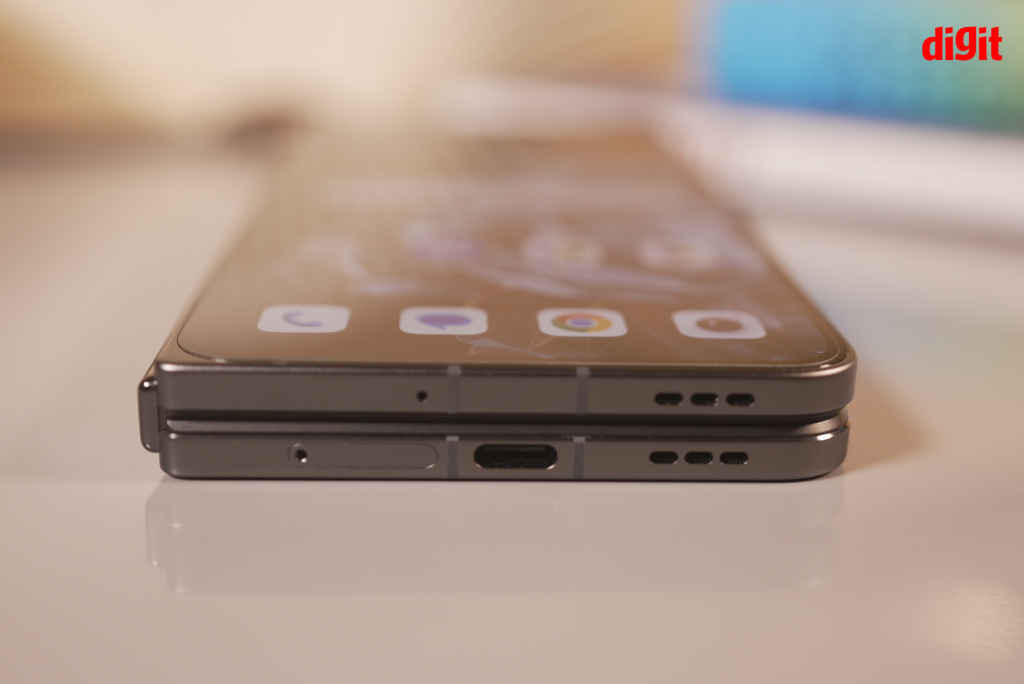
The phone provides about 7-8 hours of screen-on time with moderate to heavy usage, which is pretty good. In our 4K video loop test, the phone lasted for a good 19 plus hours from full battery to empty. Half an hour of watching Netflix dropped the battery percentage by 4 per cent, and 15 minutes of Call of Duty: Mobile dropped it by 5 per cent. Most users should reach the end of the day with about 10-15 per cent battery remaining.
The 67 W charger does an excellent job of topping up this battery quickly. It took about 46 minutes to charge the phone from 0-100 per cent, which is the fastest I’ve tested in the foldable segment! Sadly though, there’s no wireless charging, which is quite disappointing on a phone costing way more than a lakh.
Should you buy it?
So, the question is – has OnePlus finally perfected the foldable phone formula? The answer? They’ve come extremely close. The OnePlus Open is an exemplary foldable – one that shows off how to do multitasking and cameras right. According to me, the foldable interface on the OnePlus Open is the absolute best in the market right now. It capitalises on the large real estate the inner screen offers in a manner that no one has yet. Additionally, the cameras are capable enough to be compared against regular candy-bar flagship phones.
Although I really enjoy using this phone, it is not perfect. The refresh rate issues can take a serious toll on battery life, there’s no wireless charging, and gaming is not as seamless as on flagships. However, for OnePlus’ first attempt at a foldable, this is an incredibly refined product. One that I imagine will only get better with future software updates. To know if it does, tune in to digit.in for a long-term review a few months down the road!
OnePlus Open Key Specs, Price and Launch Date
| Release Date: | 23 Dec, 2023 |
| Market Status: | Launched |
Key Specifications
Storage
512 GB
Rear Camera Megapixel
48 + 64 + 64
Screen size (in inches)
7.8
Dhriti Datta
Perpetually sporting a death stare, this one can be seen tinkering around with her smartphone which she holds more dear than life itself and stuffing her face with copious amounts of bacon. View Full Profile

